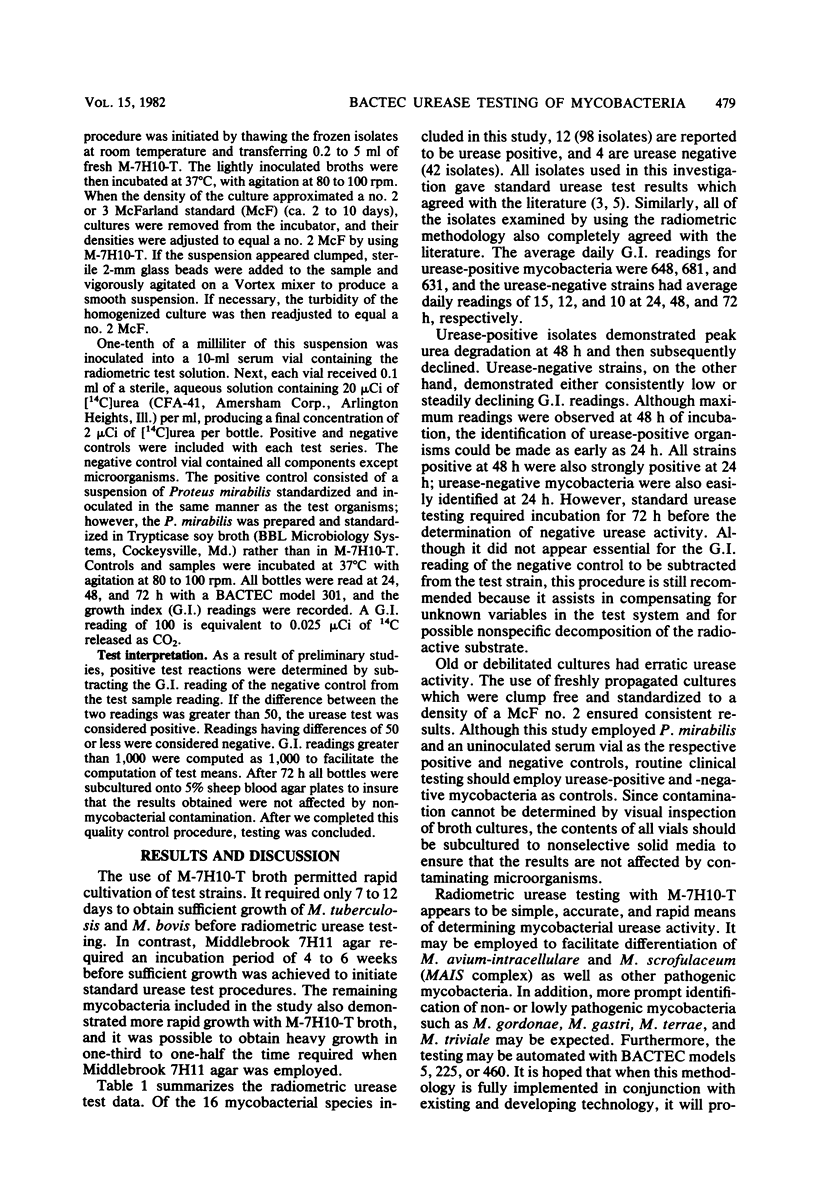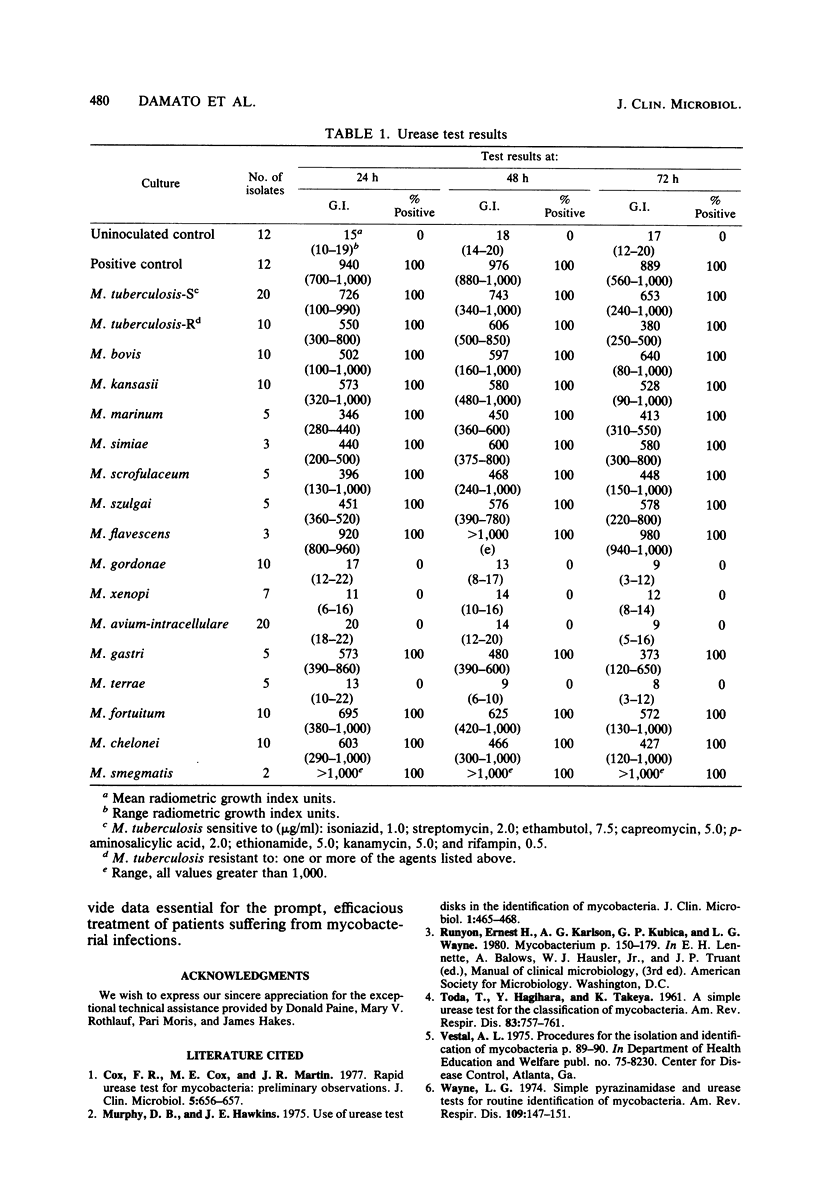Abstract
A total of 140 mycobacterial isolates from patients treated at Fitzsimons Army Medical Center or the National Jewish Hospital and Research Center and from animal specimens submitted to the National Veterinary Services Laboratory were tested by using a urease procedure modified for use with a BACTEC model 301. Mycobacterial suspensions were prepared by using Middlebrook 7H10 Tween broth. Of the 98 mycobacteria isolates which were urease positive utilizing standard methodology, all were positive using the radiometric procedures. Similarly, all 42 urease-negative isolates were also negative employing the new methodology. Although maximum radiometric readings were observed at 48 h, all positive strains were readily identified 24 h after inoculation without sacrificing either test sensitivity or specificity. Thus, urease testing of mycobacteria, using the modified BACTEC radiometric methodology, was as sensitive, as specific, and more rapid than conventional methods.
Full text
PDF


Selected References
These references are in PubMed. This may not be the complete list of references from this article.
- Cox F. R., Cox M. E., Martin J. R. Rapid urease test for mycobacteria: preliminary observations. J Clin Microbiol. 1977 Jun;5(6):656–657. doi: 10.1128/jcm.5.6.656-657.1977. [DOI] [PMC free article] [PubMed] [Google Scholar]
- TODA T., HAGIHARA Y., TAKEYA K. A simple urease test for the classification of mycobacteria. Am Rev Respir Dis. 1961 May;83:757–761. doi: 10.1164/arrd.1961.83.5.757. [DOI] [PubMed] [Google Scholar]


